Leslie Neely
Problem Behaviors Recognition in Videos using Language-Assisted Deep Learning Model for Children with Autism
Nov 17, 2022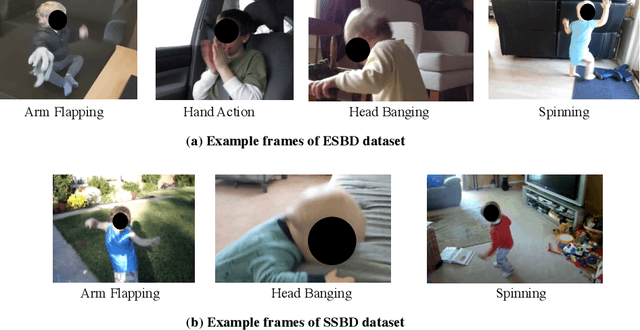
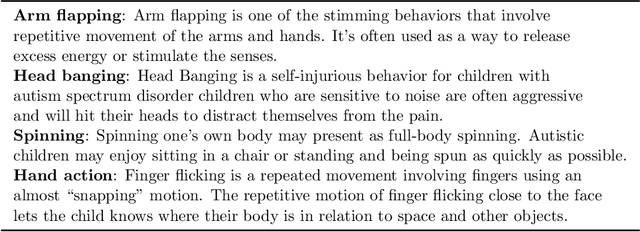
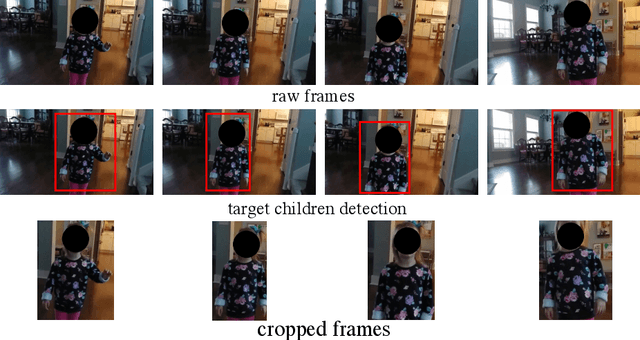
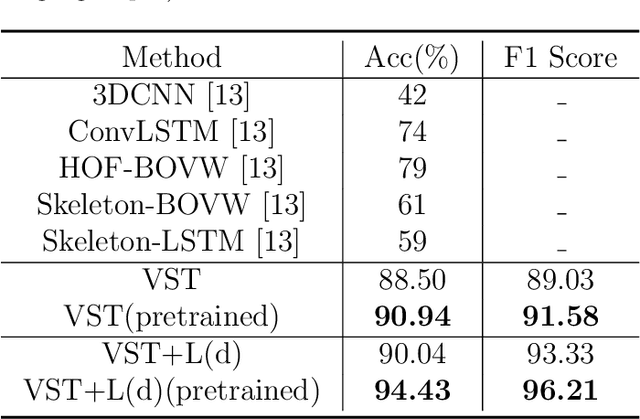
Abstract:Correctly recognizing the behaviors of children with Autism Spectrum Disorder (ASD) is of vital importance for the diagnosis of Autism and timely early intervention. However, the observation and recording during the treatment from the parents of autistic children may not be accurate and objective. In such cases, automatic recognition systems based on computer vision and machine learning (in particular deep learning) technology can alleviate this issue to a large extent. Existing human action recognition models can now achieve persuasive performance on challenging activity datasets, e.g. daily activity, and sports activity. However, problem behaviors in children with ASD are very different from these general activities, and recognizing these problem behaviors via computer vision is less studied. In this paper, we first evaluate a strong baseline for action recognition, i.e. Video Swin Transformer, on two autism behaviors datasets (SSBD and ESBD) and show that it can achieve high accuracy and outperform the previous methods by a large margin, demonstrating the feasibility of vision-based problem behaviors recognition. Moreover, we propose language-assisted training to further enhance the action recognition performance. Specifically, we develop a two-branch multimodal deep learning framework by incorporating the "freely available" language description for each type of problem behavior. Experimental results demonstrate that incorporating additional language supervision can bring an obvious performance boost for the autism problem behaviors recognition task as compared to using the video information only (i.e. 3.49% improvement on ESBD and 1.46% on SSBD).
AI-Augmented Behavior Analysis for Children with Developmental Disabilities: Building Towards Precision Treatment
Feb 21, 2021


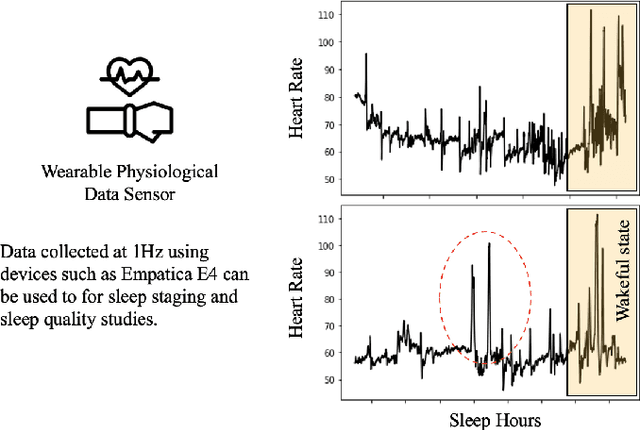
Abstract:Autism spectrum disorder is a developmental disorder characterized by significant social, communication, and behavioral challenges. Individuals diagnosed with autism, intellectual, and developmental disabilities (AUIDD) typically require long-term care and targeted treatment and teaching. Effective treatment of AUIDD relies on efficient and careful behavioral observations done by trained applied behavioral analysts (ABAs). However, this process overburdens ABAs by requiring the clinicians to collect and analyze data, identify the problem behaviors, conduct pattern analysis to categorize and predict categorical outcomes, hypothesize responsiveness to treatments, and detect the effects of treatment plans. Successful integration of digital technologies into clinical decision-making pipelines and the advancements in automated decision-making using Artificial Intelligence (AI) algorithms highlights the importance of augmenting teaching and treatments using novel algorithms and high-fidelity sensors. In this article, we present an AI-Augmented Learning and Applied Behavior Analytics (AI-ABA) platform to provide personalized treatment and learning plans to AUIDD individuals. By defining systematic experiments along with automated data collection and analysis, AI-ABA can promote self-regulative behavior using reinforcement-based augmented or virtual reality and other mobile platforms. Thus, AI-ABA could assist clinicians to focus on making precise data-driven decisions and increase the quality of individualized interventions for individuals with AUIDD.
 Add to Chrome
Add to Chrome Add to Firefox
Add to Firefox Add to Edge
Add to Edge